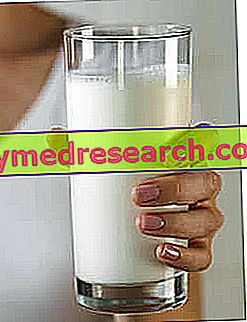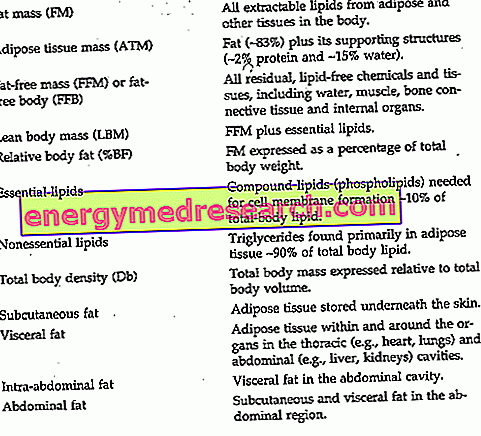Milk: maternal and animal
Milk is a food of animal origin secreted by mammary glands of female mammals, useful for feeding the offspring during the first months of life (in the human being about 6); the milk changes composition over time and, taking for granted the good state of health (both of the nurse and of the progeny) follows and totally complies with the specific nutritional requirements of the first development.
- The composition of breast milk is different:
- Among the species of mammals
- Among individuals
- In the various stages of weaning
It follows that, during breastfeeding, milk is an essential food source and NOT replaceable by the consideration of another animal breed. However, in case of need, the maternal milk of a female who does not possess the requisites necessary for the weaning of children (quantitatively and / or qualitatively insufficient secretion, gland infections, systemic infections etc.), can be replaced with that of another female of the same species.

Although milk is an irreplaceable source of sustenance in the first months of weaning, for the rest of life it is a useful but not essential food.
Man, with significant differences between populations, has always consumed animal milk due to its nutritional properties. It contains very important ions and molecules, such as calcium (Ca) and vitamin B2 (riboflavin), but also energy molecules that, in industrialized countries, human beings should significantly limit: saturated fats and cholesterol. It can be deduced that animal milk (usually the cow's milk) is a food source in some ways USEFUL, BUT not always indicated in large quantities.
In order to limit the intake of saturated fat and cholesterol with milk, the dairy industry provides consumers with some milks less rich in lipids (later reused in the production of other derivatives): semi-skimmed milk and skimmed milk ; they also provide less fat and calories and, in the most extreme cases, may be indicated in the diet therapy of hypercholesterolemia as well as obesity. What not everyone knows is that cow's milk marketed with the word "whole", while representing the most caloric derivative, is NOT the "original" excretory product of the cow, which is instead called raw milk .
Raw milk VS whole milk
Until recently, raw milk was sold exclusively at the milking area: in the stables; today, breeders have created a "short chain" distribution method based on the daily supply of refrigerating vending machines that store milk between 0 and 4 ° C (price: around 0.80 euro cents / liter).
The raw milk is whole (compared to the fat content) but does NOT undergo any processing process except MACRO-filtration; on the contrary, whole milk is previously centrifuged and skimmed (to obtain low-fat milk) and added again with its homogenized fats (homogenization). This process allows you to:
- Facilitate the production of different milks with different skimming levels
- Favor the emulsion of the lipidic fraction which tends to resurface in the "resting" raw milk
- Increase digestibility
Raw milk, compared to the whole milk, at the time of purchase has all the "original" nutritional qualities (thermolabile components: enzymes and vitamin D) and the protein fraction is slightly more digestible; however, the fat micelles remain totally INTEGRE significantly prolonging the digestibility of the food. On the contrary, whole milk is proportionately depleted with respect to the type of heat treatment applied; most commonly: High Temperature Short Time rapid pasteurization (HTST - called "fresh milk" - less storable) and Ultra High Temperature treatment (UHT - called long-life); however, thanks to the homogenization of the lipids, it boasts an absolutely greater digestibility than raw milk.
In light of the above, it seems that raw milk, in addition to having greater palatability, is nutritionally more intact even if less digestible; indeed, this statement is only partially acceptable. Raw milk, which is only MACRO-filtered, is a potentially contaminated food (even if the animals are subjected to veterinary checks twice a month), so it cannot or should not be eaten raw; statistically, about 1/5 of the samples analyzed contains pathogens and, obviously, a similar condition NEEDS the food sanitization of the product. Ultimately, at the time of purchase raw milk is certainly "richer" than whole milk but, for hygienic reasons, it MUST be boiled by the final consumer (see the information of the Italian Ministry of Health ); unfortunately, the homemade boiling significantly affects both the nutritional quality and the gustatory quality of the raw milk which, not being homogenized, continues to be less digestible than the fresh-whole one.
In conclusion, the difference between raw milk and whole milk consists in the nutritional intake of the food at the time of purchase (greater in the raw one) and in the digestibility (greater in the whole). The color of sanitized raw milk is dark and the taste is completely different, but on the other hand, sanitization is highly recommended to reduce the risk of food poisoning.
Excluding the voluntary and conscious risk in consuming raw milk NOT heat treated, from the nutritional point of view there is no reason to prefer boiled raw milk over whole-fresh or whole-UHT.



